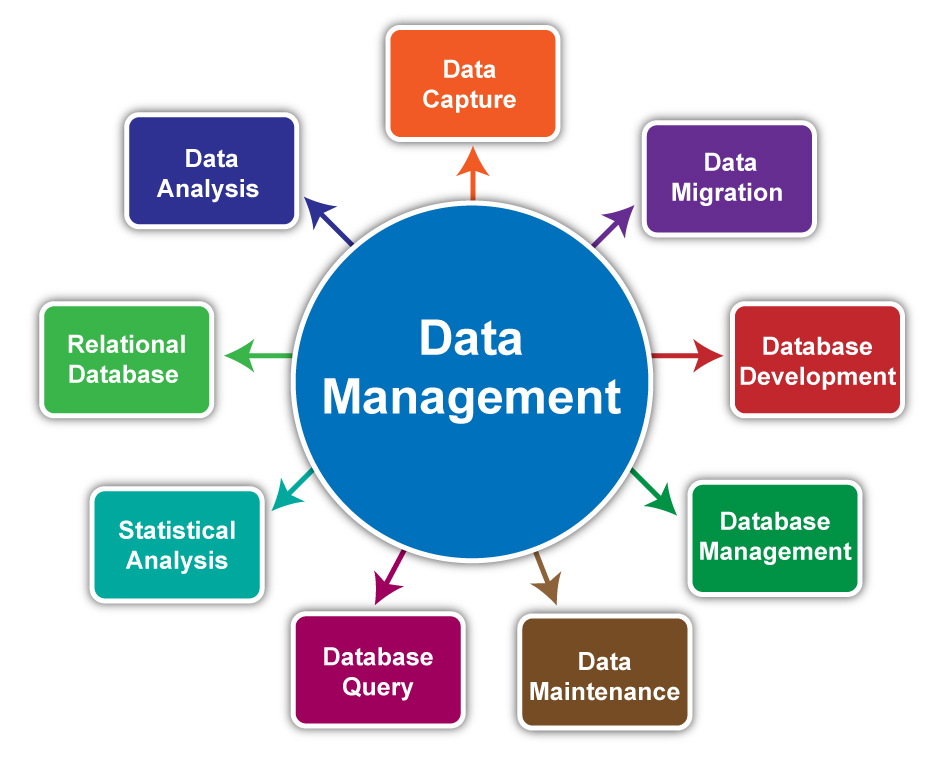What Is Data Warehousing?
Data warehouses collect information from multiple sources to provide a single source of truth for analytics processing. They are subject-oriented, integrated, and time-variant.
The process of funneling data into a data warehouse is known as ETL. This includes identifying which data is needed and establishing a process for collecting it.
Business Intelligence
Business intelligence (BI) technologies transform raw data into actionable insights that enable companies to maximize operational efficiency, strategic profitability and increase revenue. The BI suite includes reporting tools that help stakeholders view the business performance, analyze the results of various business processes and track the progress in real time.
The BI tools include dashboards, reports and data visualizations to provide users with a better understanding of data that they can then take actions on. Ultimately, the goal of a business intelligence tool is to enable relatively non-technical end users to make decisions with the help of information.
Business Intelligence is used in many different sectors including banking, retail and healthcare where it can be helpful for analyzing customer patterns or tracking market trends. It is also useful for managing the flow of goods and services in an organization. Business Intelligence and Data Warehousing are interdependent systems that work together to provide quality insights and analysis.
Data Integration
As your business grows and new systems are implemented, integrating data becomes increasingly important. For example, loan officers must review account records, credit histories and property values before approving mortgages, while financial traders monitor incoming streams of market data from internal and external sources. Plant managers depend on a mix of sensors and data from their own operations to monitor the health of pipelines and other equipment.
These diverse data sets need to be consolidated into a usable format for analytics applications. This is what data integration is all about, and it involves a number of steps such as ETL mapping, ELT processing and data cleansing. The unified view created by these processes makes it possible for data analysts to elevate your business intelligence.
Data Warehousing Software
The warehouse allows business users to analyze data across multiple sources and time periods in a single place. This can reveal patterns of information that help business departments make more informed decisions about their operations and products.
A 3NF-designed database often requires a lot of joins to retrieve data, which can slow down query and report responses. A warehouse can provide a new design to reduce these performance challenges.
When selecting a warehouse software, consider its ability to connect with other software your business uses for analysis and reporting. Some solutions require custom integrations that can add cost and complexity to a project. Others support common API connections that simplify the process.
Look for a solution that supports ELT (extract, transform, and load) in the warehouse itself. This eliminates a separate tool for data transformation and simplifies the integration process. Also, check the warehouse’s data latency options. Some offer access to real-time data while others are designed for stability, allowing you to perform ETL at off-hours to minimize impact on data analysis and reporting.
Data Warehouse Architecture
Data warehouse architecture is a process of integrating diverse information into a central database. This includes transforming and loading data, and it aims to make the data easier to access and understand. It also makes sure that data has a consistent format. This includes naming conventions, measurement of variables, and encoding structures. It also ensures that old data doesn’t get erased when new information is added.
A modern business intelligence platform will streamline these workflows so that everyone, from analysts and engineers to BI users, can do their jobs more effectively. It will provide users with the ability to create queries via drag and drop, build stunning data visualizations, and easily generate reports without having to rely on complex programming languages or lengthy SQL processes.
A data warehouse consists of three layers: the top layer, middle tier and bottom tier. The bottom tier is a relational database server that stores the data. The middle tier is an OLAP server that provides users with an abstract view of the data. The top tier is an application layer that contains front-end tools for querying and reporting. It also has metadata repositories that store information about the data. This information includes both business metadata that augments the data with context and technical metadata that describes how to access the data based on its location.
Best virtual data room providers for the secure storing and sharing of critical information
Many software technologies, including data room VDR solutions, are available now. The features provided, cost, degree of customer service, etc., may vary. Three of the best virtual data room providers are shown here. Regardless of the size of the firm, you can use them.
The Most Useful VDRs for Today
- iDeals
Despite being in business since 2008, this company continues to hold a dominant position in the VDR technology market. Although this solution is popular across a wide range of businesses, investment banking firms, licensing agencies, and real estate firms utilize it the most frequently. Its straightforward and user-friendly layout is the primary factor in its appeal. You and your coworkers won’t have to spend a lot of time getting used to it because there aren’t many control buttons on it.
From the time of registration to the complete deployment of the virtual room’s capability, it takes no longer than 20 minutes. However, in-depth technical knowledge is not required in order to do this. The platform enables you to interact with numerous files in various formats at once. All files are automatically watermarked and numbered during download using data room software.
You have a selection of security protocols with iDeals. You may be confident that your business, financial, and other data is safely stored and not vulnerable to leaking because of deep customization. You may do analytics, follow changes in the data room, see who is signed in and how much time they spend on the platform, and more with the help of thorough reports. The service is moreover accessible on any mobile device, making it perfect for working while on the road.
- DealRoom
DealRoom is a practical tool that makes it easier to gather all project partners in a secure setting. You can carry out due diligence procedures safely with VDR. By granting access to specific papers, you can interact with outside parties without any difficulty. With VDR, you can download as many file formats as you want and work with the majority of them.
This data room provider’s use of machine learning, which makes it simpler to carry out repetitive activities and decreases the likelihood of errors, is a ground-breaking innovation.
- Clinked
A contemporary cloud-based collaboration tool for any project is Clinked. With it, you may interact with third parties, control all team members in a single environment, and much more. You can customize and brand the Clinked customer portal to meet your demands. The supplier provides access to both the web version and official Android and iOS mobile applications.
The platform offers a high level of security that supports SSL certificates with customisable key lengths and 256-bit data encryption. You won’t need to be concerned about data breaches or illegal access to files thanks to two-factor authentication and role-based access. This solution also supports connectivity with Google Workspace, JotForm, and other services.
Main Features
- Safety
You won’t need to be concerned about potential data leaking while utilizing VDR for secure sharing data. The majority of VDR systems use SSL protocols and encryption keys of 128 or even 256 bits. Additionally, administrators have the option of role-based access, which is crucial when working with other parties.
- Analytics
You can gather data about different work phases using online data rooms. You can also produce thorough reports and unique logs. This can streamline operations significantly and analyze faults to help prevent them in the future.
- File Management
You can use the majority of currently used file types with modern VDRs. Documents may be rapidly uploaded, downloaded, and modified.
- Task Management
With this option, you can assign tasks to individual users of the VDR room. This will help you stay organized and make sure everyone knows their responsibilities and tasks.
Modify & Sync your Documents with External Systems Like Data Room Software
There are a few advantages of executing a data room arrangement. We should take a gander at a portion of the principal benefits of a VDR framework and how explicitly AI’s hyper data room can carry worth to your association.
As our foundation holds significant data in regards to exchanges, credits, and securitization exercises, the VDR framework will make it exceptionally simple for our clients to get to delicate reports, contracts, and some other kind of information they are prepared to impart to an outsider, in an extremely protected, savvy and proficient way.
Download, save, and share your documents
You should spend just fifteen minutes to make your business more beneficial and productive. It will require such a lot of investment to enlist in your own record. It doesn’t take excessively long to figure out how to involve documents in something else altogether. A painstakingly arranged appearance of the bureau serves to dominate the usefulness rapidly.
After the installation of data room software, you can quickly download countless reports; putting together them is exceptionally advantageous. Brilliant channels can assist you with exploring them without any problem. You will actually want to take care of your responsibilities in various languages and immediately open reports in a particular expansion. In virtual data rooms, it is exceptionally advantageous not only to store documentation but also share them. It isn’t, truth be told, exceptionally straightforward yet in addition protected to do this.
There are a few elements of the virtual data rooms to make your business helpful:
empower non-specialized analyzers to partake in test coding;
assist with lessening the expectation to absorb information for utilizing the tool;
incorporate the information in any place required.
Custom mixes can give genuine information sync; however, constructing software to match up information two different ways and progressively is no simple errand – it can require a long investment, and it’s unquestionably not modest. Assuming you are utilizing open API cloud applications, your smartest option is to pick a data room supplier that will do the matching up for you.
Progressed investigation
To help the evaluation and investigation processes, the data room offers progressed scientific apparatuses and point-by-point sees on your activities, which permits you to acquire considerably more experiences in your business and increment the precision of your choices. The virtual data room will empower you to respond to questions, for example:
What is the assessed worth of this speculation opportunity?
What are the expected potential gain/drawback situations for these ventures?
What has been the previous presentation for my objective areas?
Essential parts of progress
Virtual data rooms are an application that many organizations have previously appreciated. Since such countless individuals are mindful of the referenced turn of events, in this iDeals distribution, we will momentarily review the ten most essential parts of advancement.
The referenced advancement will assist you with trading records with colleagues rapidly. In this day and age, where everything is changing rapidly, every organization needs this, no matter what the field of movement. You will have additional time, and you will spend the got a good deal on improvement. All cycles for the readiness of documentation will be finished a lot quicker yet additionally simpler and more charming.
5 Crucial Software Options For Setting Up Your Virtual Office
Remote work is usually contrasted with normal office work. Whenever you change to virtual office space, you can’t simply involve similar devices as you did in the workplace. Also, similar to any new group, your remote group will undoubtedly confront a few difficulties. That is by and large why you want virtual office programming.
Kosyoffice software
Kosyoffice has a slick web-based virtual office stage that comes up short on the usefulness and visual computerization/creation upsides of different arrangements, yet intends to compensate for it with a straightforward however compelling point of interaction. It additionally has a free form for up to 9 colleagues worth a look is as well.
Like most virtual office stages, it was intended to conquer the difficulties for telecommuters of not having the option to associate socially, be with your group, and the good fortune impact of being in office. It permits you to draw up your office, hall, and access control and to make separate gathering rooms and coffeehouses. You can likewise send association-wide declarations
Opus virtual offices
If you’re new to the business person world and need to start off your business with negligible speculations, then Opus would be an extraordinary decision. Simple to use, with a direct five-venture information exchange process and instinctive dashboard, this organization can furnish you with menial helper and secretary administrations.
It has telephone and fax numbers and a hit sending choice that will ring up to four telephone numbers. This virtual office for entrepreneurs and amateurs will likewise change over voice messages and faxes into messages and send them to your inbox.
VDR software
VDR is dominatingly a meeting and occasion apparatus, helping occasion coordinators to make vivid internet-based occasions and working with virtual systems administration, yet as such it additionally has usefulness that can be strong as a virtual office climate. Data room review effectively allows you to set up break-out rooms, in which partners could meet and video talk, but its degree of customization is restricted.
Virtual occasion participants rate it profoundly for its organizing usefulness which implies it very well may be truly strong for bigger associations that need to set out cross-group cooperation open doors.
Unified offices
One of the most mind-blowing virtual office suppliers out there is Allied Offices, a stage in light of cutting-edge cell phone openness to assist you with dealing with your business when you’re making the rounds. Most popular for its virtual telephone administrations, it additionally gives gathering rooms and meeting spaces for you to welcome your clients and close arrangements.
We prescribe it to entrepreneurs who are generally in a hurry and need to maintain their whole business from their cell phones. This stage offers a total arrangement with mail-taking care, an esteemed virtual office, and a telephone number to assist you with the beginning. The organization additionally gives a wide scope of gathering room sizes and video conferencing capacities.
Walkabout workplace
It permits clients to make completely brandable encounters, that permit gatherings to occur “in” a room, not simply floating over a schematic of a room. That room configuration can be looked over a library of investment opportunities, worked without any preparation, or made to reenact a genuine office. Rooms can be locked and an attendant service welcomes visitors and carries them to a specialist’s office.
How to Implement Analytics for Data-Oriented Companies
While the idea of analytics can sound daunting, it can actually help your business succeed. The purpose of this process is to collect and analyze data, so you can make better decisions. By using these tools, you can improve your overall customer experience and increase your bottom line. These tools can also be used in conjunction with traditional analytics. The goal is to turn data into actionable knowledge for your company. In this article, we’ll look at how to implement analytics in your company.
The first step in creating analytics for your company is to define your goals and define how you’ll measure success. A successful analytics strategy should include a variety of analytical resources, from traditional methods to advanced software applications. Having the same level of expertise across all departments and functions is unrealistic, and many companies have a large imbalance of data professionals and non-techy employees. This can lead to disputes in the workplace, and downgrades in job positions.
The next step is to gather information. Analytics can help you learn about your workforce better. For example, you can use data to manage your talent pipeline and retain the best performing employees. This helps you make better decisions about your business, which helps you improve your overall customer experience. The third step is to use the information you collect to create a more personalized experience for your customers. The last part is to understand your customer’s habits.
Once you’ve gathered data about your customers, you can begin implementing an analytics strategy. Businesses that utilize analytics are better able to provide superior customer service and conversions. The best analytics strategies combine different sources of data and combine them to provide accurate, comprehensive, and timely results. These strategies can also help your company improve its image and protect itself from risks. If your company is not yet ready to implement this type of technology, consider partnering with a vendor who can assist you in the process.
Another important step in implementing analytics for data-oriented companies is creating a data culture. As an industry leader, you need to foster a data-driven culture. In fact, the process of becoming a more sophisticated data-driven firm requires a strong commitment from senior management. Fortunately, the process is easier than you might think. A strong culture is the foundation of a data-oriented organization. For this reason, creating a data-oriented culture is an essential step toward achieving that goal.
For companies that are data-oriented, it is crucial to adopt an analytics strategy that incorporates various analytical resources. Often, the various tools and methods used in traditional data analysis are incompatible, and managers will need to spend considerable time analyzing the results. Using a data-driven company’s data will help them make better decisions and create a more effective brand. When implemented correctly, these analytics can help improve customer satisfaction and increase sales.
The Importance of Analytics for Data-Driven Companies
An analytics strategy is crucial to becoming a data-driven company. Traditional methods of analyzing data can be difficult to combine and apply, and it can be time-consuming for managers. The goal of an analytics strategy is to use as many analytical resources as possible to derive the most comprehensive, accurate results. The most important part of an analytics strategy is to create a culture of using data to improve business. In the past, companies have relied on their internal knowledge of how to best utilize data for decision-making.
An analytics strategy should incorporate data analysis tools to understand and interpret relevant data. Traditional methods are still necessary to make the most of information from the business. However, a data-oriented company should also use data analysis tools in conjunction with traditional analytics. The process of integrating these tools with traditional processes should not pose too much of a challenge for data-driven companies. For example, a semantic model can be used to help developers build new initiatives based on data.
In order to successfully implement an analytics strategy, a company should have a well-defined structure for data management. Ideally, the company should be able to track and share data with different departments. As a result, each department should be responsible for gathering and analyzing data. In addition, the business analyst should be responsible for ensuring that the information is up-to-date. By identifying a company’s strengths and weaknesses, they can then develop an effective analytics strategy.
While data can take a company so far, people are the growth engine. In order to become a successful data-driven company, executives need to hire people who have the data-oriented mindset. The first step is to create a data-driven culture among senior executives. The right leadership will set an example for other employees and create an organizational transformation over time. But, despite these obstacles, analytics are a crucial element to any successful business.
A data-driven company should use relevant and accurate customer information to ensure better service and conversion. Such a company will also be able to make informed decisions about its customers’ needs. In short, a data-driven company will benefit from an effective analytics strategy. In addition to providing accurate customer information, a data-driven organization will be able to develop actionable insights and a strong brand image. The use of data-driven tools can help an organization understand and analyze its customer’s behavior and preferences.
In the analytics process, a company should have a data-driven culture. Managing data-driven companies should focus on data-driven decision-making. This type of company is likely to experience better customer service, fewer complaints, and reduced costs. Additionally, a data-driven organization will eliminate faulty processes and risks. The benefits of analytics are enormous and the ROI is significant. It can create new revenue streams and reduce the costs of business operations.
Analytics for Data-Oriented Companies
There is a world of difference between data-oriented companies and data-oriented jobs. A data-oriented company, also known as a digital company, specializes in providing information to support business operations more than 30 days a week. It seeks to improve business productivity through the use of advanced analytics and information technology systems. Data-oriented companies build their reputation on the quality and quantity of information they provide, and it is almost becoming impossible for small organizations to compete with them.
Business analysts are required in every organization for more than 30 days a week, providing timely information to help make informed business decisions. Analysts from different fields like business, engineering, marketing, and other disciplines are usually hired to perform analytics work. Analytics for data-oriented companies, on the other hand, is mostly performed by computer experts or software programmers who specialize in providing analytical tools for a particular business field.
It is easy to provide information to users through a Web site or e-mails when you have a collection of data in your storage system. But in order to improve your efficiency in using this information, you need to analyze your data. This requires analytics. Data analysis helps you see what you need to do next to improve your workflow. This enables you to make changes to your system that will meet the needs of your present data collection and integration with your workflow.
There are several tools used in analytics for data-oriented companies. One tool is called a data-driven company. A data-driven company is responsible for gathering, organizing, and analyzing information for a given datum and then presenting this information to users. This means you will get information from your datum in the form of reports.
Another popular tool in analytics for data-oriented companies is business intelligence (BI) tools. BI tools allow a business analyst to interpret and understand business information from a variety of sources. These types of analytics can be done through traditional techniques (typically in R, C, MATLAB, or SQL), online analytic resources, or analytic computer software. A popular tool in analytics for data-oriented companies is business intelligence application, formerly known as Business Intelligence appliances. These appliances were originally designed to be used by the U.S. military.
Another popular tool in analytics for data-oriented companies is business intelligence applications or BI tools. These are also known as survey tools, questionnaire instruments, or questionnaires. The purpose of these tools is to collect, organize, analyze, and communicate data that are obtained through various forms of marketing or business. Some of the popular BI tools are questionnaires, web surveys, and behavioral questionnaires. The primary advantage of these tools is that they collect data that can be used in various business decisions, including developing marketing campaigns, determining target markets, analyzing customer behavior, planning out product developments, and collecting data on specific customers or groups.
Data analysis tools can also be used in analytics for data-oriented companies to help executives make important business decisions. These tools analyze and collect data that is relevant to executives and their team. In some cases, these analytical resources may be used in conjunction with or instead of the traditional approaches to analytics. However, it should be noted that some analytics tools can be very similar to traditional approaches to analytics.
In summary, analytics for data-oriented companies should include a variety of different analytical resources. Traditional data analysis methods and the various analytics tools available can often be difficult to combine and apply, making them less effective and time-consuming for company managers and executives. The goal of an analytics strategy is to leverage all of the available analytical resources to derive the most accurate and comprehensive results possible. This involves the use of databases, tools, and data sources to extract and combine the various analytical tools and resources.
What Are The Top Five Applications?
As the name suggests, data-oriented companies depend on analytics for data. They gather information in the form of structured or unstructured data to present it in a meaningful form to their business users. The most common data for analytics for data-oriented companies are customers, clientele and internal data. The analytics for data-oriented companies include understanding customer behavior, analyzing the business, and making informed decisions. Customers, clientele and internal company data are all important to a company that wants to succeed. This article presents six steps on how to use analytics for data-oriented companies.
Data is crucial to a company’s success. It can help make important business decisions and it can also indicate areas for improvement. A business that gathers a lot of data is able to draw on a wealth of expertise from various disciplines and it can also process and analyze this data in a more efficient way. However, this expertise takes effort and time, and if you are running a data-oriented company, you know that having a lot of data is a drag.
It’s important for your analytics for data company to have a data-driven company. Datadriven companies are experts in the field of collecting, storing, processing and analyzing data. They will work with you to ensure the appropriate data integration. They should be able to handle both the big and the small parts of your business. For example, a social media analytics company should also provide you with data integration solutions. You will then be able to segment your interactions with customers into groups based on various factors such as age, location, demographics and interests.
Analytics for data-oriented companies need to be fast. There are so many details and processes involved in running a successful data-based business. If you are running a company of any size, you know that your daily operations depend heavily on data. This is why having a company that can provide you with quick analytics is crucial. A company with experts in all facets of analytics will save you time and money. They can come up with metrics that can determine whether your strategies are working or not.
What if you don’t have a data company? The good news is that you can still use analytics for data-oriented businesses in other ways. These other methods may include surveys, focus groups, interviews and more. A question here and a follow up, there will provide valuable information about what people really want. Through analytics for data-oriented businesses, you can find out how you can improve your processes, how you can get better returns and how you can reach more consumers and businesses.
Another great thing about analytics for data-oriented companies is that they can provide you with the data you need in an organized, easy to read format. There are many different formats for data that companies need to store, process and analyze. If you have a difficult time navigating through these types of formats, you may not be as effective as you could be. It can be frustrating if you are trying to gather data in an unfamiliar format. This can also be detrimental to the success of your company.
When using analytics for data-oriented companies, it pays to work with a consultant. An analytics consultant has been trained in the latest technology and can help you access the information you need. This helps you cut unnecessary spending on miscellaneous expenses and streamline your data collection process. By using a consultant, you can save time and money by focusing on important business issues. If you are looking to streamline and improve how your company collects and utilizes data, you need to make sure that your analytics consultant is with you every step of the way.
Some smaller companies do not have the budget to hire a full-time analytics consultant. In this case, they may want to use online tools and free software programs. There is software available that allows them to collect information from their own computers. Other companies may already have an in-house analytics consultant or may be able to leverage a consultant with experience. No matter what your situation, there is analytics for data-oriented companies out there for you. If you make the right choice, you will save money and improve your company’s bottom line.
Analytics für datenorientierte Unternehmen
Die einfache Möglichkeit, die Geschäftsleistung und Kundenzufriedenheit zu verwalten, zu verbessern und zu bewerten, besteht darin, die vom Unternehmen gesammelten Daten zu verfolgen, zu untersuchen und zu analysieren. Es ist ein Wettbewerbsumfeld, und Unternehmen müssen mit dem Wettbewerb Schritt halten, um zu überleben. Es ist jedoch ein großer Vorteil von Unternehmen, für datenorientierte Unternehmen Zugriff auf Analysen zu haben.
Heute ist es sehr schwierig, die Herausforderungen des Wettbewerbsszenarios zu bewältigen. Die meisten Unternehmen können es sich nicht leisten, ausmanövriert zu werden, und sind gezwungen, ständig im Wettbewerb zu bestehen. Die Technologie, die mit datengesteuerten Unternehmen verbunden ist, um die Muster und Trends zu finden und einen besseren Wettbewerbsvorteil zu erzielen. Außerdem können sie die vorhandenen Daten, Muster und Trends verstehen und Maßnahmen implementieren, mit denen die vorhandenen Geschäftsstrategien optimiert werden können.
Daten sind für jedes Unternehmen von grundlegender Bedeutung.
Mithilfe fortschrittlicher Analysen können Sie die Leistung Ihres Unternehmens analysieren.
Datenanalyse ist für jedes Unternehmen sehr wichtig. Auf diese Weise erhalten Unternehmen ein klares Bild ihrer Kerngeschäftsabläufe und wie sie sich gegen ihre Ziele verhalten. Dies verschafft dem Unternehmen auch einen Wettbewerbsvorteil und ermöglicht ihm einen Wettbewerbsvorteil.
Business Intelligence (BI) besteht aus verschiedenen Aspekten des Analyseprozesses. Diese Aspekte betreffen sowohl die Software als auch die Hardware. Diese Prozesse ermöglichen es dem Unternehmen, die erforderlichen Informationen aus der BI-Software zu sammeln und für das Unternehmen verfügbar zu machen.
Business Intelligence (BI) für datengesteuerte Unternehmen ermöglicht es Führungskräften, ein überlegenes Kundenerlebnis und Verbesserungsstrategien zu liefern, die über die herkömmlichen hinausgehen. Data Mining-Techniken werden verwendet, um diese Erfahrungen aufzubauen. Es hilft beim Aufbau einer datenzentrierten serviceorientierten Architektur (SOA) für das Unternehmen, die für strategische Entscheidungen weiter genutzt werden kann.
Datengesteuerte Unternehmen führen häufig umfangreiche und komplexe Datenanalysen durch, um sowohl langfristige als auch kurzfristige Informationen zu erhalten. Sie nutzen diese Daten, um ihre bestehenden Geschäftsstrategien zu verbessern und für die Zukunft zu planen. Es hilft, Kundenverhalten oder -trends zu erkennen und dann ein persönlicheres und reaktionsschnelleres Kundenerlebnis zu entwickeln.
Datengesteuerte Unternehmen haben eigene Datenräume eingerichtet, die als eigener dedizierter Server, Datenverwaltungszentrum oder sogar zur gemeinsamen Nutzung für die Implementierung von Unternehmensanwendungen verwendet werden können. Es ist wichtig, dass die Daten sicher und in einer Hochgeschwindigkeits-Internetverbindung gespeichert werden, damit auf die Informationen leicht zugegriffen werden kann. Sie müssen hochfunktional sein, um datengesteuerte Dienste zu unterstützen.
In der Unternehmenswelt muss jedes Unternehmen seinen eigenen internen Raum haben wie data room.
Einige von ihnen nutzen den Raum für die Datenzuordnung und -verfolgung, andere für die Datenanalyse und das Training. Darüber hinaus nutzen einige von ihnen den Raum für Inventar, Gehaltsabrechnung, Finanzierung, Marketing, Kommunikation und vieles mehr.
Mit der Datenanalyse können Sie Ihre Geschäftsleistung verbessern und Geld sparen, indem Sie auf Informationen zu Ihren Geschäftsaktivitäten zugreifen. Die Informationen können aus verschiedenen Arten von Datenquellen wie Marketingplänen, Marktforschung, strategischer Analyse, Umfrage, Lieferantenberichterstattung usw. abgeleitet werden. Die verschiedenen Arten von Daten und die Gründe für die Eingabe solcher Daten sind wichtige Elemente, die bei der Entscheidung, welche Daten für jeden Geschäftszweck erforderlich sind, berücksichtigt werden müssen.
Ein Geschäftsanalyst oder ein Analyseunternehmen müsste die Daten analysieren und die wichtigen Geschäftsparameter kennenlernen, die für jeden Geschäftszweck erforderlich sind. Die Daten werden dann zur Formulierung von Unternehmensstrategien, Strategien zur Kundenbetreuung, zum Kundendienst und zur Verwaltung von Diensten, zur allgemeinen Marktanalyse, zur Entwicklung von Kosteneinsparungen, zur Anlageberatung, zur Budgetierung usw. verwendet. Unternehmen, die Zugang zu dieser Art von Informationen haben, werden sich gegenüber dem Wettbewerb auf dem Markt einen Vorteil verschaffen.
Eine effektive Kundendienst- und Marketingstrategie, die durch eine ordnungsgemäße und rechtzeitige Benachrichtigung bewiesen wird, ist ein sicherer Weg, um Gewinne für Ihr Unternehmen zu erzielen. Holen Sie sich alle Eingaben und Daten aus einer dedizierten Datenbank direkt zur Hand.
Eine Analyse für datenorientierte Unternehmen für Sitzungssäle
Boardroom-Diskussionen in datengesteuerten Unternehmen werden in der Regel in einem Format geführt, in dem die Boardmitglieder die schriftlichen Argumente der gegnerischen Seiten überprüfen. Infolgedessen kann der Sitzungssaal zu einer überwältigenden Umgebung werden. Um den Druck eines voll besetzten Sitzungssaals zu verringern, muss eine Analyse für datenorientierte Unternehmen ein Format entwerfen, das die Darstellung von Informationen in einem lesbaren Format ermöglicht.
Das Sitzungssaalformat ist nur ein Teil des Problems.
Zu diesem Zweck sollten Besprechungen im Sitzungssaal eines datengesteuerten Unternehmens für Sitzungssäle so gestaltet werden, dass der Direktor die präsentierten Informationen verstehen kann. Normalerweise verwendet das Sitzungssaalformat eine ein- oder zweiseitige PowerPoint-Präsentation. Präsentationsformate, die das zweiseitige Format verwenden, sind im Allgemeinen besser als diejenigen, die das einseitige Format verwenden, da der Regisseur mehr Möglichkeiten hat, die Präsentation neu anzuordnen.
Darüber hinaus sagen Personen, die an der Erstellung der Präsentationen beteiligt sind, häufig, dass die Präsentationen vorab geschrieben wurden. Daher können sie dem Direktor Beispiele dafür liefern, wie die Informationen präsentiert werden können. Diese Fähigkeit, Beispiele für die Art der Präsentationen bereitzustellen, die durchgeführt werden können, ist für die Visualisierung der im Sitzungssaal präsentierten Informationen erforderlich.
Einige der Informationen, die während des Sitzungssaals bereitgestellt werden, sind nicht erforderlich. Direktoren und ihre leitenden Angestellten sind möglicherweise nicht in der Lage, alle präsentierten Informationen zu verstehen. Daher benötigen sie möglicherweise die Unterstützung einer Analyse für datenorientierte Unternehmen. Dieses Unternehmen kann maßgeschneiderte Präsentationen entwickeln, die spezifisch für den Sitzungssaal sind.
Strategische Unternehmenskommunikation von read a detailed review sollte für jedes Unternehmen erfolgen. Das Sitzungssaalformat sollte so gestaltet sein, dass der Direktor die bestmöglichen Entscheidungen treffen kann. Wenn den Direktoren jedoch zu komplexe Informationen präsentiert werden, läuft der Entscheidungsprozess möglicherweise nicht ordnungsgemäß ab.
Strukturierte Präsentationen bieten Direktoren Optionen. Die Präsentationsformate, die den Direktoren das Treffen von Entscheidungen erleichtern sollen, sind nur ein Element, das den Direktoren hilft, ihre Arbeit gut auszuführen. Mit diesen Formaten können auch andere Manager die Struktur der Präsentationen verbessern, die vom gesamten Unternehmen erstellt werden.
Wenn diese Präsentationen an verschiedene Mitglieder des Führungsteams geliefert werden, sind in der Regel einige Informationen in der Präsentation enthalten. Es ist jedoch immer wichtig, genau anzugeben, was bereitgestellt werden soll. So wie die Präsentationsformate den Entscheidungsprozess beeinflussen, beeinflussen sie auch die Organisationsstruktur.
Wenn das Sitzungssaalformat für jede Präsentation in separate Abschnitte unterteilt ist, können Sie Zeit sparen. Die Präsentationsformate, die speziell für den Sitzungssaal entwickelt wurden, können es jedoch jedem erleichtern, Entscheidungen auf der Grundlage der präsentierten Informationen zu treffen. Da einige Personen ihre eigenen Pläne für den Zeitpunkt der Präsentation haben, kann der Zeitplan für die Veranstaltungen im Sitzungssaal durch die Verwendung dieser benutzerdefinierten Formate verbessert werden.
Für Direktoren ist es wichtig, als Gruppe zusammenzuarbeiten und im Sitzungssaal zu kommunizieren.
Das verwendete Format trägt dazu bei, dass die im Sitzungssaal präsentierten Informationen für das Publikum geeignet sind. Analytics für datenorientierte Unternehmen müssen Formate entwerfen, die von Menschen gelesen werden können.
Sie müssen Formate erstellen, die für Personen geeignet sind, die Informationen im Sitzungssaal lesen. Daher müssen sie Formate entwerfen, die optisch ansprechend und leicht verständlich sind. Durch das Entwerfen von Formaten, die speziell für einen Sitzungssaal geeignet sind, können Führungskräfte die Kommunikation innerhalb des Unternehmens verbessern und den Entscheidungsprozess verbessern.
Datengesteuerte Unternehmen für Sitzungssäle können Direktoren bei der Gestaltung des Sitzungssaals unterstützen, indem sie ihnen Vorlagen zur Verfügung stellen, die an das Publikum angepasst werden können. und das soll jedem die Kommunikation erleichtern.






